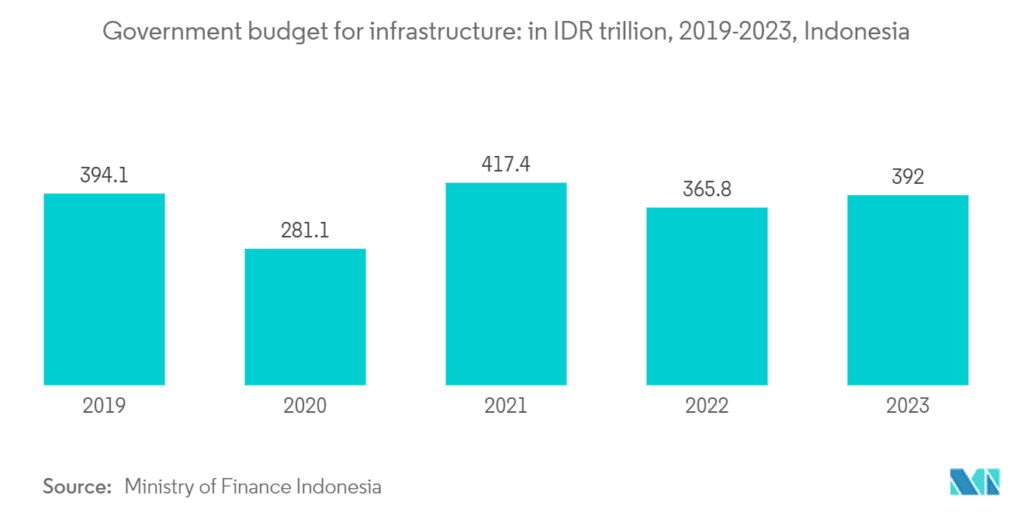Public-private partnerships (PPPs) are playing a critical role in driving infrastructure and construction growth in Indonesia. With the country facing a massive infrastructure gap of $1.5 trillion by 2030, the need for sustainable, long-term investment solutions has never been greater. Public-Private Partnerships Indonesia are emerging as a key mechanism to bridge this gap. By combining private sector capital and expertise with public resources, it can create lasting impact.
Bridging Indonesia’s Infrastructure Gap
The Indonesian government has set ambitious goals to upgrade the country’s infrastructure, with a focus on transport, water supply, and energy sectors. According to the National Medium-Term Development Plan (RPJMN 2020-2024), the total investment needed is Rp5,957.7 trillion ($429 billion). What’s notable is that over 40% of this funding is expected to come from the private sector, highlighting the critical role of PPPs in meeting the country’s infrastructure needs.
This emphasis on Public-Private Partnerships Indonesia reflects the government’s strategy to leverage private sector involvement in critical infrastructure projects, improving efficiency, innovation, and risk management. As private firms bring not only capital but also technical expertise, Indonesia can move faster toward its development goals.
Successful Public-Private Partnerships Indonesia
A prime example of the transformative potential of Public-Private Partnerships Indonesia is the Jakarta-Bandung High-Speed Rail project. This flagship PPP initiative is a $6 billion investment aimed at drastically reducing travel time between these two major cities from 3 hours to just 40 minutes . The project not only improves connectivity but also reduces transportation costs, making it a key driver of economic development in the region.
This high-speed rail project illustrates the impact that public-private collaborations can have on large-scale infrastructure challenges. It showcases how a partnership between government and private companies can transform transportation and bring lasting economic benefits.
Financial Instruments Supporting PPPs
Financial instruments are also pivotal in making Public-Private Partnerships Indonesia attractive to private investors. One such tool is the Indonesia Infrastructure Guarantee Fund (IIGF), designed to provide guarantees for PPP projects. By reducing the risk for private investors, the IIGF has enabled the financing of 12 major infrastructure projects, attracting investments worth $6.7 billion by 2022. This approach ensures that large-scale projects, such as toll roads and airports, can move forward with financial security.
This type of backing is essential to encourage private companies to participate in projects that might otherwise seem too risky. By providing financial guarantees, the IIGF removes one of the largest obstacles to private investment in infrastructure.
The Impact of Public-Private Partnerships Indonesia Impact on the Construction Sector

The impact of PPPs is also evident in Indonesia’s construction sector. In 2021, the sector saw impressive growth of 7.8%. Much of this growth is attributed to PPP-driven infrastructure projects, including toll roads, seaports, and airports. By facilitating partnerships that draw on both public and private strengths, Indonesia has been able to scale up its infrastructure development quickly and efficiently.
Public-Private Partnerships Indonesia projects are particularly valuable for the construction industry as they inject much-needed funds, stimulate job creation, and provide the infrastructure necessary for other sectors to thrive. From energy to transport, these partnerships are the backbone of a rapidly growing economy.
Public-private partnerships have become a vital engine driving infrastructure and construction growth in Indonesia. With a $1.5 trillion infrastructure gap looming, Public-Private Partnerships Indonesia offer an effective solution. Flagship projects like the Jakarta-Bandung High-Speed Rail and the support of instruments such as the Indonesia Infrastructure Guarantee Fund demonstrate the immense potential of these collaborations. As Indonesia continues to rely on PPPs to meet its infrastructure needs, the country is well-positioned to achieve sustainable and inclusive growth.

